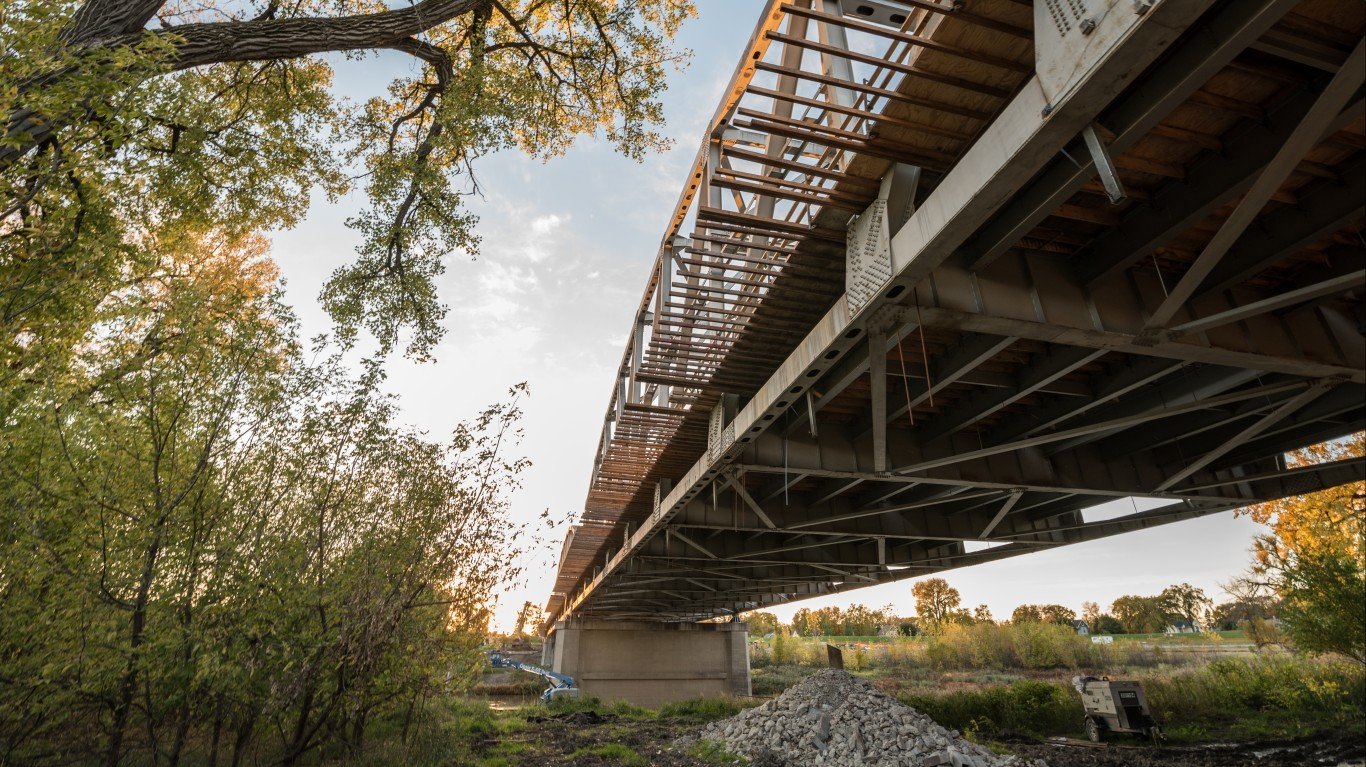

It’s probably safe to say that the November 2020 election is shaping up to be unlike any other in our lifetimes. With less than three months to go until November 3, former U.S. Senator and Vice President Joe Biden is leading Donald Trump in most polls.
Biden’s campaign website lays out 45 plans and agendas for addressing the major issues the country faces. Some of these ideas articulate how he plans to approach the social issues in the United States, and others promise massive government spending to serve two purposes: get Americans working again and, in doing so, rebuild the U.S. economy.
Last month, Biden released an updated plan committing to spend $2 trillion over four years that will put the United States “on an irreversible course to meet the ambitious climate progress that science demands.” That spending includes investments in infrastructure, the auto industry, mass transit, electric utilities, housing and buildings, agriculture and conservation, research and development, and environmental justice.
Every four years, the American Society of Civil Engineers (ASCE) prepares an infrastructure “report card” that includes an estimate of the investment needed to bring U.S. infrastructure back to a better-than-passing grade. The last report was completed in 2017 and set the country’s needed infrastructure investment at $2 trillion over the 10-year period between 2016 and 2025.
Construction projects identified by the ASCE cover everything from repairing roads to modernizing U.S. schools and updating the country’s airports. Construction industry publication Engineering News-Record listed in May 2019 the nation’s top 400 construction companies for 2018. The largest, measured by revenue, was Virginia-based Bechtel with revenue of $16.8 billion.
Of the top 10, just three were publicly traded in the United States, and two others were subsidiaries of foreign firms. The rest, including Bechtel, were privately controlled.
While it may be easy to look at potential outcomes in a vacuum, a slew of variables could boost or dampen the business effects for a sector or for corporations as a whole. Tax changes could lower the after-tax net income effect, regulation costs and industry practice changes can increase operating expenses, and changes in employment laws also could come into play. In short, it may be easy to see an opportunity for some companies, but it’s hard to know exactly what the net result will be.
Here’s a look at four of the largest U.S. construction companies and how they look now to investors. If Biden wins the White House in November and can implement his infrastructure plan (by no means a slam dunk), all four could see their prospects rise considerably. It is important to note that infrastructure modernization has been on political wish lists for years, and the gap between what needs to be done and what gets done is widening, not closing.
Fluor
In 2018, Fluor Corp. (NYSE: FLR) posted revenue of $15.6 billion, making it the second-largest construction firm on the Engineering News-Record list. Fluor provides engineering, procurement, construction (EPC) services, as well as maintenance services, to customers in a variety of industries. According to the Construction Dive website, Fluor is the top construction firm in the petroleum and industrial sector.
The company’s market cap is about $1.7 billion, and it has taken a big hit to its share price in the past two years, dropping about 80% of its value. In March, Moody’s Investors Service put the company’s Baa3 senior unsecured debt rating under review for a downgrade citing “recent deterioration in [Fluor’s] operating results and credit metrics due to project bidding and execution issues and the risk these trends will persist.”
Fluor’s 52-week range is $2.85 to $22.49, and the stock closed Monday at $11.96. At a price target of $13.00, the implied upside is 8.7%, and shares trade at a multiple of 10 to estimated 2021 earnings. Fluor has suspended its dividend payments.
AECOM
Los Angeles-based EPC firm AECOM (NYSE: ACM) posted 2018 revenue of $11.2 billion, according to Construction Dive. The company’s projects include bridges, sports stadiums, ports and buildings.
In May, the company reaffirmed 2020 guidance for 10% growth in adjusted earnings before interest, taxes, depreciation and amortization and free cash flow of $100 to $300 million. AECOM reportedly has captured about 25% of federal spending on COVID-19 response work.
AECOM’s 52-week price range is $21.76 to $52.40, and shares closed Monday at $38.84. With a price target of $46.44, the implied upside on the stock is about 19.6%, and shares trade at a multiple of around 15 times expected 2021 earnings. The company does not pay a dividend.
KBR
Houston-based EPC company KBR Inc. (NYSE: KBR) has a significant presence in aerospace, defense and energy projects. Although not ranked among the top 10 in revenue, KBR’s 2018 revenue totaled about $5.9 billion.
Last week, the company announced that it is transforming its operating model from three segments to two, Government Solutions and Technology Solutions, folding its Energy Solutions segment into the technology portion of the business.
KBR stock closed at $23.35 on Monday, in a 52-week range of $12.00 to $31.92. The consensus price target is $29.80, implying a potential upside of 27.6%, with shares trading at about 13 times expected 2021 earnings. KBR pays a $0.40 annual dividend (yield of 1.7%).
Granite Construction
Granite Construction Inc. (NYSE: GVA) is based in Watsonville, California, and operates in four construction segments: transportation, water, specialty construction and materials. Late last month, the company completed a review begun in February of its financial reports for 2018 and 2019 and concluded that reports for fiscal 2018 and the first three quarters of last year “could not be relied on.”
In a business update that included some second-quarter 2020 financial information filed on Monday, Granite said it had committed and awarded projects valued at $4.1 billion on its books and that it is executing on its strategy of bidding for smaller projects, which will result in a decline in the overall value of its projects. The company withdrew 2020 guidance in May and has not filed its second-quarter earnings report.
Granite’s stock closed Monday at $19.69, up about 3.6% for the day, in a 52-week range of $8.90 to $37.71. The consensus price target on the stock is $17.75. Shares traded at more than 12 times expected 2021 earnings. The company pays an annual dividend of $0.52 (yield of 2.74%).
Take This Retirement Quiz To Get Matched With A Financial Advisor (Sponsored)
Take the quiz below to get matched with a financial advisor today.
Each advisor has been vetted by SmartAsset and is held to a fiduciary standard to act in your best interests.
Here’s how it works:
1. Answer SmartAsset advisor match quiz
2. Review your pre-screened matches at your leisure. Check out the
advisors’ profiles.
3. Speak with advisors at no cost to you. Have an introductory call on the phone or introduction in person and choose whom to work with in the future
Take the retirement quiz right here.
Thank you for reading! Have some feedback for us?
Contact the 24/7 Wall St. editorial team.
 24/7 Wall St.
24/7 Wall St.


